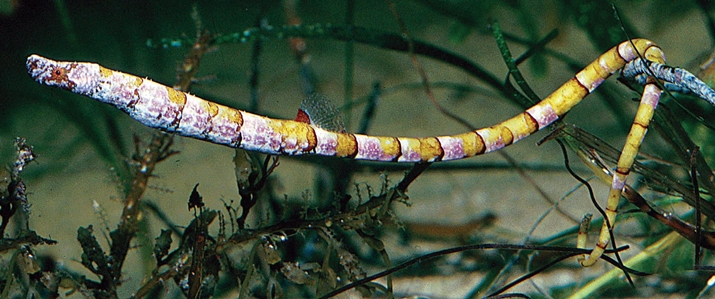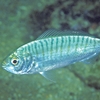General Description
Body long, slender; body ridges indistinct; tail prehensile; head short, snout ridge slightly elevated in large individuals. Tan to dark brown with brown or white markings, often with diffuse dark bands and pale interspaces; dorsal fin usually with a dark anterior blotch. To 11 cm.
Biology
Rarely seen, possibly due to its small size and excellent camouflage.
Habitat
In shallow inshore waters and tide-pools in seagrass beds and amongst macroalgae, in depths of 1-37 m.
Seagrass meadows
Reefs
Distribution guide
Southern Australia.
Species Group
Fishes › Seahorses, pipefish and allies
Depth
Shallow (1-30 m)
Deep ( > 30 m)
Water Column
Max Size
11 cm
Commercial Species
No
Global Dispersal
Native to Australia
Identify
Conservation Status
- DSE Advisory List : Not listed
- EPBC Act 1999 : Not listed
- IUCN Red List : Not listed
- Fisheries Act 1995 : Protected Aquatic Biota






